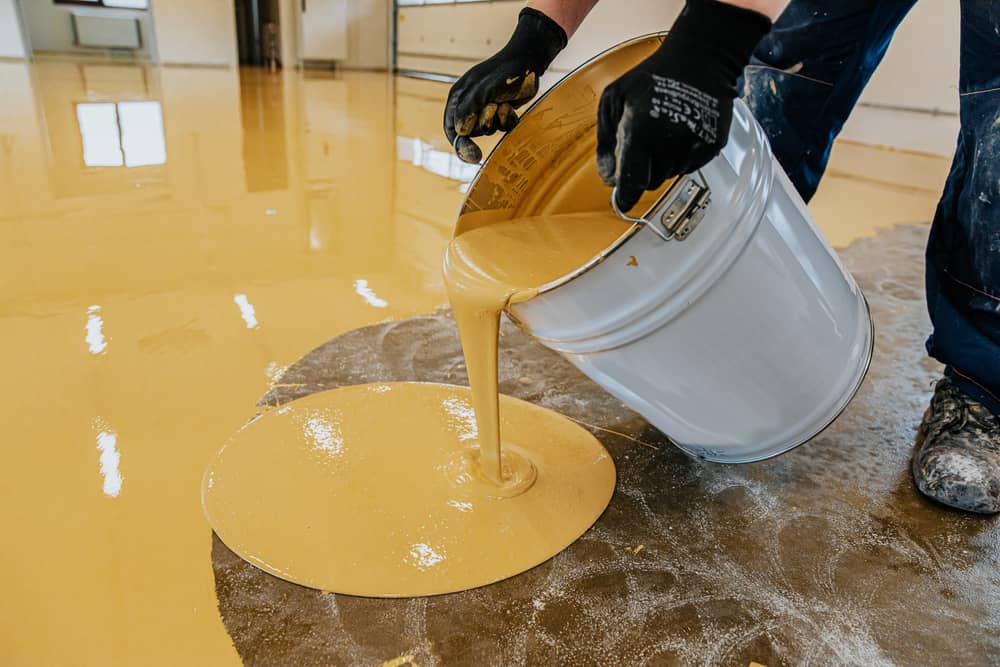Epoxy painting has surged in popularity over recent years, becoming a go-to solution for both residential and commercial spaces. Its unique combination of durability, aesthetics, and versatility makes it an ideal choice for various applications. This comprehensive guide will delve into everything you need to know about epoxy painting, from its benefits and applications to tips for a successful project.
What is Epoxy Painting?
Epoxy painting involves the use of a special type of paint that includes a resin and a hardener. When these two components are mixed, they create a chemical reaction that produces a tough, durable coating. This type of paint is renowned for its high performance, longevity, and resistance to various forms of damage, making it an excellent choice for high-traffic areas.
Benefits of Epoxy Painting
1. Durability
One of the primary advantages of epoxy painting is its exceptional durability. The hardened coating is resistant to abrasions, impacts, and chemical spills, ensuring that surfaces remain pristine for years. This makes epoxy paint ideal for garages, warehouses, and industrial environments where floors endure heavy use.
2. Aesthetic Appeal
Epoxy paint offers a sleek and glossy finish that can enhance the appearance of any space. Available in a variety of colors and patterns, epoxy coatings can be customized to match any decor. The high-gloss finish also helps in reflecting light, which can brighten up darker areas.
3. Easy Maintenance
Maintaining epoxy-painted surfaces is relatively simple. The non-porous nature of epoxy paint prevents dirt and grime from penetrating the surface, making cleaning easy and quick. Regular sweeping and occasional mopping is usually sufficient to keep epoxy floors looking like new.
Common Applications of Epoxy Painting
1. Garage Floors
Garage floors are one of the most popular applications for epoxy paint. The coating can withstand heavy vehicle traffic, resist oil and chemical stains, and provide a polished, professional look to an otherwise utilitarian space.
2. Industrial and Commercial Spaces
Due to its durability and ease of maintenance, epoxy paint is frequently used in industrial and commercial settings. Warehouses, factories, and retail stores benefit from the long-lasting, tough nature of epoxy coatings.
3. Residential Interiors
Epoxy paint isn’t limited to industrial use; it’s also making its way into residential interiors. Homeowners are using epoxy coatings on kitchen countertops, bathroom floors, and even living room floors to achieve a modern, high-gloss finish.
How to Apply Epoxy Paint
1. Surface Preparation
Proper surface preparation is crucial for a successful epoxy painting project. This involves cleaning the surface thoroughly, removing any existing coatings, and repairing any cracks or holes. A clean, smooth surface ensures better adhesion and a more durable finish.
2. Mixing the Epoxy
Mixing the epoxy components accurately is essential. Follow the manufacturer’s instructions to combine the resin and hardener. Mixing should be thorough to ensure the chemical reaction that hardens the epoxy occurs uniformly.
3. Applying the Epoxy
Application can be done using a brush, roller, or spray gun, depending on the size and nature of the project. It’s important to apply the epoxy evenly to avoid bubbles and streaks. For floors, starting at the farthest point and working towards the exit is recommended to avoid stepping on the wet surface. (worldnewsfox)
Tips for a Successful Epoxy Painting Project
1. Choose the Right Product
Not all epoxy paints are created equal. It’s important to select a product that is suitable for the specific application. Consider factors such as the intended use, environmental conditions, and desired finish when choosing an epoxy paint.
2. Follow Instructions Carefully
Epoxy painting involves a precise chemical process. Always follow the manufacturer’s instructions for mixing, application, and curing to ensure the best results.
3. Work in Optimal Conditions
Temperature and humidity can affect the curing process of epoxy paint. Ideally, work in conditions where the temperature is stable and within the recommended range for the product. Avoid high humidity, which can cause the epoxy to cure improperly.
Conclusion
Epoxy painting is a versatile and durable solution for a wide range of surfaces, offering numerous benefits such as enhanced durability, aesthetic appeal, and easy maintenance. Whether you’re looking to upgrade your garage floor, create a stunning countertop, or protect an industrial space, epoxy paint can meet your needs. By understanding the application process, choosing the right products, and following best practices, you can achieve professional-quality results that stand the test of time. Embrace the potential of epoxy painting to transform your spaces with style and resilience.

